Honda reveal innovative electronically blown V3 motor that could see production as soon as 2026
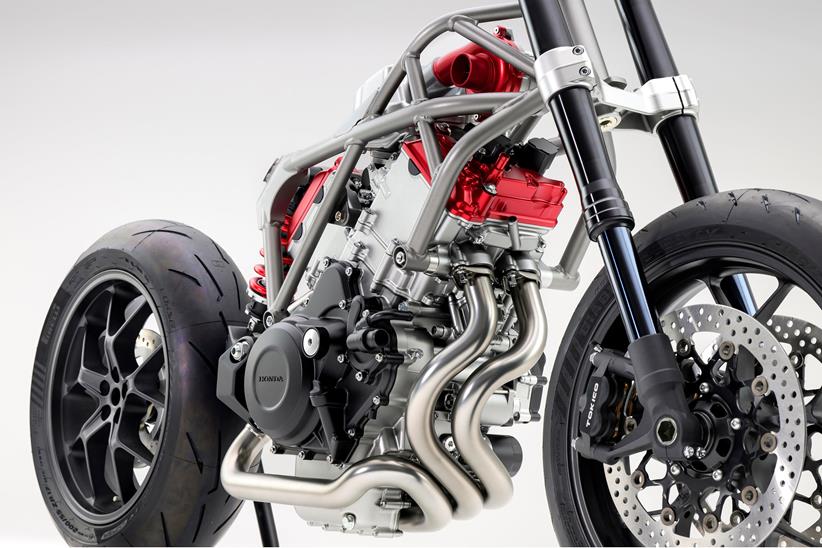
In a bid to future proof their internal combustion engines (ICE), Honda have revealed an all new, ultra efficient, mid-capacity forced induction V3 motor for their upcoming bike models, which could find its way into a production machine as soon as 2026.
While the Japanese brand have shown a firm commitment to drink the electric Kool-Aid – recently showing off their EV Fun and EV Urban concepts at EICMA – the marque’s engineers have also been busy putting their minds to what the next generation of ICE could look like.
What they’ve come up with is a 75 degree, water-cooled, triple-cylinder unit arranged in a V configuration with an electric compressor in place to provide compressed intake air – a first in the world of motorcycling.

Honda say the engine layout provides a particularly slim and compact design, with the forward cylinder bank containing two pots, and a single cylinder towards the rear.
Whilst the motor is still in its developmental stage, it runs and was displayed to the public housed in a steel trellis frame, with an accompanying a single sided swingarm and pair of 17-inch wheels.
Honda remain tight lipped about specifics, with no displacement or power figures available, but MCN where able to sit down with the company’s Italian Communications Director, Costantino Paolacci, who said:
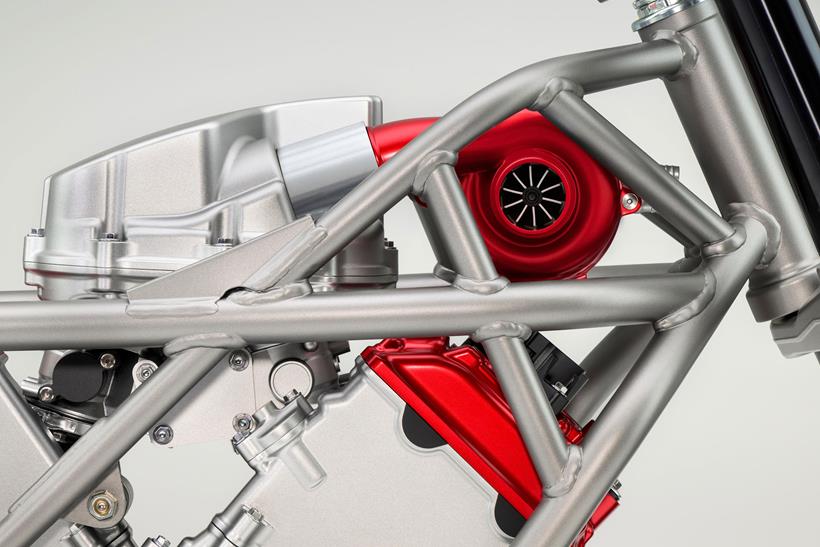
“We are very proud of it, particularly from an engineering point of view. It’s important to say that it is a real engine; it’s not a mock-up. The engine is running already on a bench. Next year we could potentially see a full prototype motorcycle with this in, then the year after, we could see the first production model coming.
“Moving to forced induction is mainly in the pursuit of performance for us, not emissions. The compressor is intended to provide the torque of a bigger engine with a smaller displacement.
“It will become the base for a line-up of new models, the first of which will likely be a roadster,” added Paolacci.
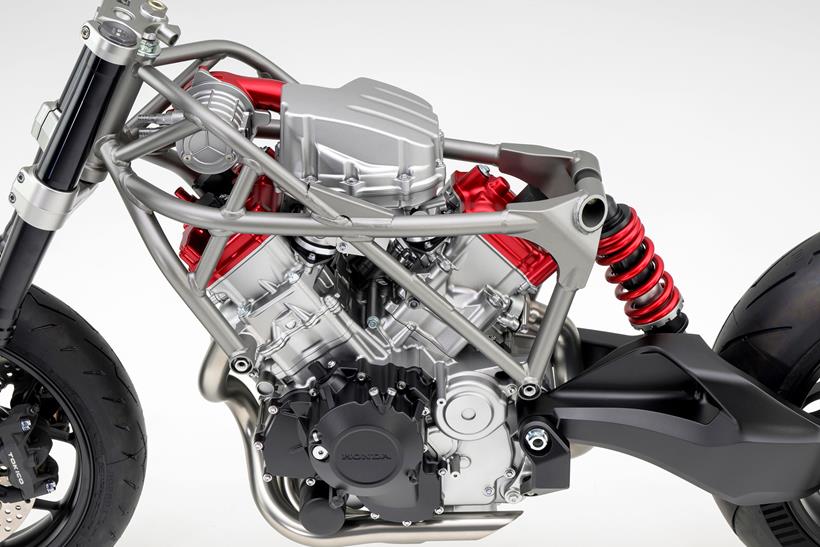
Honda’s newly developed concept uses an electric motor to spin a turbine which increases air density for combustion. It is, in effect, a supercharger, albeit not one driven by the engine’s crankshaft as is usually the case.
Unlike turbochargers, which are driven by exhaust gasses to deliver a pressured volume of air, superchargers are fed power from other means, be that a belt drive, gear drive or, as is the case here, an electric motor.
Because the compressor is spun via electric motor, there is a greater freedom of layout compared to a crankshaft driven supercharger. It also doesn’t require an intercooler, further aiding the compactness of the design.
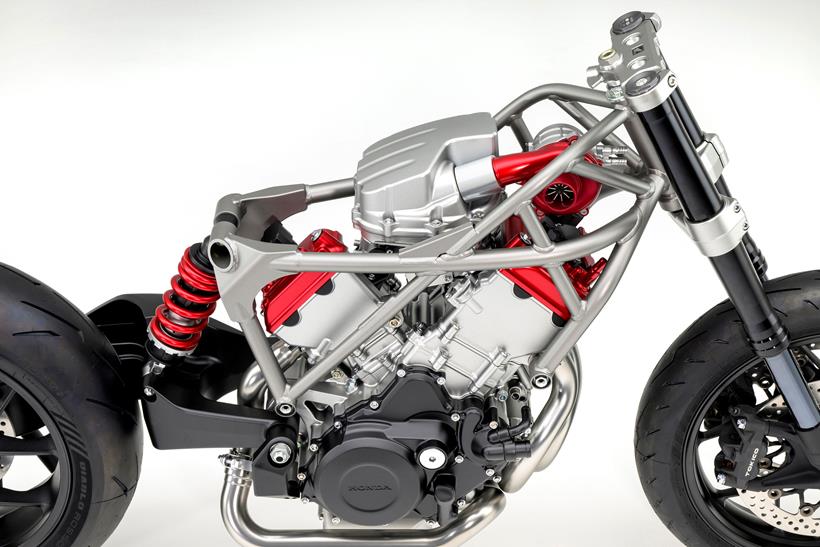
In the automotive world, the technology has firmly established itself, with the 2018 Audi SQ7 SUV being the first production car to feature an electric supercharger to build boost while the twin turbochargers spool up. Other car makers began to follow suit and dabble in electronic forced compression in various guises.
However, due to the high-power draw needed to run such systems (Audi’s version required a 48-volt backbone to give the blower enough oomph) no manufacturers have been able to pull off such a feat for the two wheeled world, until now.
To get around the issue of running the compressor, Honda confirmed to MCN that future bikes with this engine would come equipped with two batteries and a beefed-up charging system – with one battery solely responsible for powering the electric motor used to spin the turbine.
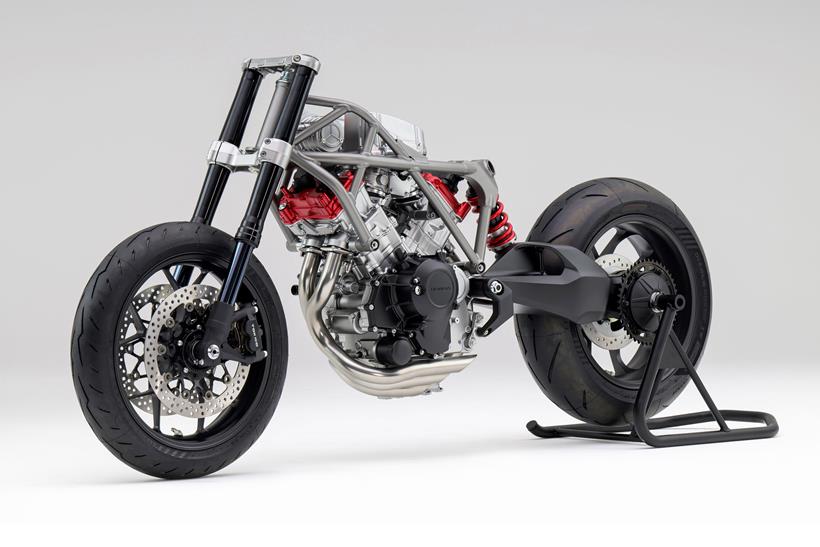
That oddball configuration isn’t Honda’s first foray into the V3 design and those with long memories will remember the last time Honda had a V3 engine for the road – the pioneering two-stroke NS400R of the mid-1980s.
Now, 40 years on and the new engine concept is a world apart in terms of tech from the old smoker. As well as having the potential to offer a high-power output in relation to capacity, it could also provide emissions gains, and high fuel efficiency relative to its output.






